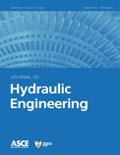
JOURNAL OF HYDRAULIC ENGINEERING
Scope & Guideline
Elevating knowledge in the science of water management.
Introduction
Aims and Scopes
- Fluid Mechanics and Hydrodynamics:
Research in this area includes studies on turbulent flow behavior, flow patterns in open channels, and the dynamics of fluid interactions with structures and sediments. - Sediment Transport and Scour Mechanisms:
This scope encompasses the investigation of sediment transport processes, scour depth evaluation around structures, and methodologies for sediment management in waterways. - Hydraulic Structures and Design:
The journal publishes articles on the design, performance, and optimization of hydraulic structures such as dams, weirs, spillways, and fishways, including innovative modeling techniques. - Numerical and Experimental Modeling:
A significant focus is placed on the development and validation of numerical models and experimental methods to simulate hydraulic phenomena and assess water flow dynamics. - Water Resource Management and Environmental Hydraulics:
The journal addresses the management of water resources, including flood modeling, drainage systems, and the impact of hydrological changes on aquatic ecosystems.
Trending and Emerging
- Hydraulic Modeling with Advanced Computational Techniques:
There is a growing emphasis on utilizing sophisticated computational methods, such as Computational Fluid Dynamics (CFD) and machine learning, to model complex hydraulic systems and predict their behavior. - Environmental and Ecological Impact Assessments:
Research focusing on the ecological implications of hydraulic engineering projects, including studies on fish passage, habitat restoration, and the impacts of hydraulic structures on aquatic ecosystems, is gaining importance. - Integrated Water Resource Management:
An increasing number of studies are addressing the interconnections between water supply, flood management, and environmental sustainability, reflecting a holistic approach to water resource management. - Innovative Sediment Management Strategies:
Emerging themes include new methodologies for sediment transport analysis and innovative sediment management practices aimed at minimizing environmental impacts and enhancing riverine ecosystems. - Resilience and Adaptation in Hydraulic Design:
Research is increasingly focusing on designing hydraulic systems that are resilient to climate change and extreme weather events, emphasizing the need for adaptive management strategies in hydraulic engineering.
Declining or Waning
- Traditional Hydraulic Measurement Techniques:
There has been a noticeable decrease in publications focusing on conventional hydraulic measurement methods as newer technologies, such as remote sensing and advanced modeling, gain traction. - Basic Theoretical Studies on Fluid Dynamics:
Research centered on fundamental fluid dynamics principles appears less frequently, indicating a shift towards applied research that addresses real-world hydraulic challenges. - Static Hydraulic Structures:
The focus on static structures, such as traditional dams and reservoirs without consideration for dynamic interactions or environmental impacts, seems to be diminishing in favor of more integrated and adaptive management approaches.
Similar Journals
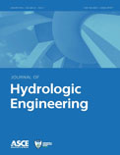
JOURNAL OF HYDROLOGIC ENGINEERING
Pioneering Research in Hydrologic EngineeringJOURNAL OF HYDROLOGIC ENGINEERING is a premier academic journal published by the ASCE - American Society of Civil Engineers, dedicated to advancing the field of hydrologic engineering through the dissemination of innovative research and methodologies. With an ISSN of 1084-0699 and E-ISSN 1943-5584, this journal serves a global audience and has established itself as an essential resource for professionals, researchers, and students in the civil and environmental engineering disciplines. Currently ranked in the Q2 category across multiple areas including Civil and Structural Engineering and Water Science and Technology, the journal promotes high-quality, peer-reviewed articles that address critical challenges in hydrology, water resources, and environmental management. Despite not being an open-access journal, it offers valuable insights that drive progress in sustainable engineering practices. The convergence of research from 1996 to 2024 makes it an invaluable archive for historical and cutting-edge contributions to the field, reflecting its commitment to fostering knowledge and innovation in hydrologic engineering.
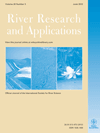
RIVER RESEARCH AND APPLICATIONS
Bridging Research and Practice in Water ScienceRIVER RESEARCH AND APPLICATIONS, published by WILEY, stands as a pivotal journal in the fields of Environmental Science, Water Science and Technology, and Environmental Chemistry. With an impressive Impact Factor signifying its influential presence, this journal offers a platform for high-quality research and applications related to river ecosystems and water resources. The journal operates under a hybrid access model, allowing for both subscription-based and open-access options, thus promoting accessibility and widespread dissemination of knowledge. Since its inception in 1996, RIVER RESEARCH AND APPLICATIONS has maintained a distinguished reputation, reflected in its ranking within the Q2 quartiles of major categories like Environmental Chemistry and Water Science. Engaging researchers, practitioners, and students alike, the journal is committed to publishing cutting-edge studies that foster a deeper understanding of river dynamics and their environmental implications, making it an essential resource for contributors advancing the sustainable management of water environments.
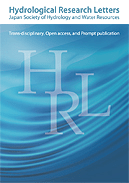
Hydrological Research Letters
Innovative Insights: Shaping the Future of Water ScienceHydrological Research Letters (ISSN: 1882-3416) is a distinguished peer-reviewed journal published by JSHWR, JAGH, JAHS, JSPH in Japan. Established with open access since 2007, this journal serves as a critical platform for the dissemination of innovative research in the field of hydrology, water science, and technology. With an increasing impact factor, currently positioned in the Q3 quartile for both Earth and Planetary Sciences and Water Science and Technology, it attracts a diverse readership keen to stay abreast of groundbreaking findings that shape water management and environmental policy. Researchers, professionals, and students alike will find this publication an invaluable resource for enhancing their understanding of hydrological processes and their implications. The journal is committed to fostering open academic dialogue and encouraging high-quality contributions during its converging years from 2015 to 2024. For more information, authors and readers can access the journal at its address, C/O INT ACAD PRINTING CO, LTD, Shinjuku-ku, Tokyo, Japan.

International Journal of GEOMATE
Fostering dialogue among scholars and practitioners for a sustainable tomorrow.The International Journal of GEOMATE, published by GEOMATE INT SOC based in Japan, is a pivotal resource for scholars and practitioners in the fields of Building and Construction, Environmental Engineering, Geotechnical Engineering, and Soil Science. Established in 2011 and continuing to set the standard in its focus areas, this journal serves as a platform for innovative research and practical applications, with contributions that significantly enhance the understanding and development of sustainable engineering practices. With its current classification in the Q3 quartile across multiple categories, it strives to disseminate critical knowledge and foster dialogue among a diverse audience, including researchers, industry professionals, and students. Though operating under a traditional subscription model, the journal's emphasis on rigorous peer review and high-quality publications ensures a substantial impact factor, further reinforcing its reputation in academia. Spanning from 2011 to 2024, the International Journal of GEOMATE invites contributions that advance the knowledge frontier and address contemporary challenges in engineering and environmental science.
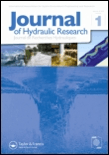
JOURNAL OF HYDRAULIC RESEARCH
Innovating Water Solutions Through Rigorous ResearchJOURNAL OF HYDRAULIC RESEARCH, published by TAYLOR & FRANCIS LTD, serves as a leading platform for the dissemination of groundbreaking research in the fields of civil and structural engineering as well as water science and technology. With its inception in 1963 and a focus that spans to 2024, the journal holds a notable reputation, categorized in the Q2 quartile in both engineering and environmental sciences, indicating its significant impact on contemporary research. It is indexed under ISSN 0022-1686 and E-ISSN 1814-2079, allowing for a comprehensive reach to professionals and scholars worldwide. The journal regularly features high-quality articles, fostering an academic community dedicated to innovative hydraulic research, sustainable water management, and engineering advancements. Researchers and practitioners benefit from the rigorous peer-review process that ensures the highest standards of scholarly excellence in every published work. As part of its commitment to knowledge dissemination, JOURNAL OF HYDRAULIC RESEARCH remains an essential resource for anyone engaged in the dynamic interplay of water and engineering sciences.
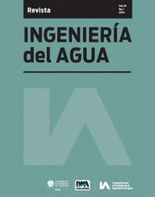
Ingenieria del Agua
Uniting Science and Practice in Water EngineeringIngenieria del Agua, published by Universitat Politècnica de València, Editorial UPV, is a prominent open-access journal dedicated to the field of water engineering and management. With its ISSN 1134-2196 and E-ISSN 1886-4996, this journal has been facilitating the dissemination of critical research and innovative practices in water resources since 1994. With a commitment to providing unrestricted access to high-quality research, Ingenieria del Agua aims to serve as a pivotal platform for researchers, professionals, and students alike. Focused on the intersection of hydrology, environmental engineering, and sustainability, the journal encourages submissions that address contemporary challenges in water resource management, promoting advancements that are vital for both ecological conservation and societal needs. By fostering a collaborative academic environment, it plays an essential role in shaping the future of water engineering.

Mine Water and the Environment
Advancing sustainable solutions for mine water management.Mine Water and the Environment is a leading peer-reviewed journal published by Springer Heidelberg, dedicated to advancing the understanding of the complex interactions between mining activities and water resources. With an ISSN of 1025-9112 and an E-ISSN of 1616-1068, this journal serves as a vital platform for researchers, professionals, and students in the fields of Geotechnical Engineering, Engineering Geology, and Water Science and Technology. Positioned in the Q2 category for both relevant quartiles in 2023, it showcases high-impact research that addresses critical issues associated with mine water management, treatment, and its environmental implications. Spanning a publication history from 1991 to 2024, the journal not only highlights contemporary challenges in mine-related water issues but also fosters interdisciplinary collaboration to promote sustainable practices in mining. Situated in Heidelberg, Germany, this journal strives to provide open discussion and innovative solutions for the pressing environmental challenges posed by mining activities, making it an essential resource for anyone invested in the sustainability of our water resources.
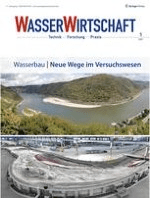
WasserWirtschaft
Advancing water science for a sustainable future.WasserWirtschaft is a renowned academic journal dedicated to the critical field of water science and technology. Published by SPRINGER VIEWEG-SPRINGER FACHMEDIEN WIESBADEN GMBH, this journal has been a vital resource for researchers, professionals, and students since its inception in 1973, covering an extensive range of topics pertinent to water management, engineering, and environmental sustainability. Although it is currently ranked in the Q4 category of the Water Science and Technology category as per the 2023 Scopus metrics, with a ranking of #246 out of 261, the journal is committed to enhancing the discourse surrounding water resource management through high-quality, peer-reviewed articles. The journal does not operate on an Open Access basis, ensuring that its content is curated and accessible to subscribers while promoting rigorous academic standards. With its historical significance and focus on contemporary water-related challenges, WasserWirtschaft remains an essential publication for stakeholders aiming to advance the science and technology of water resources in a rapidly changing world.

ROCK MECHANICS AND ROCK ENGINEERING
Elevating Knowledge in Rock Mechanics and EngineeringROCK MECHANICS AND ROCK ENGINEERING, published by SPRINGER WIEN, stands as a premier journal in the fields of civil and structural engineering, geology, and geotechnical engineering. Since its inception in 1983, this journal has evolved into a leading platform for the dissemination of high-quality research, underscored by its impressive Q1 quartile rankings in multiple relevant categories as of 2023. With a significant impact factor and a ranking of 8th out of 321 in Earth and Planetary Sciences (Geology), the journal attracts scholars and practitioners aiming to contribute to and stay abreast of advancements in rock mechanics and engineering practices. While it does not offer Open Access options, its comprehensive and rigorous peer-reviewed articles serve as essential resources for fostering knowledge and innovation in the sector. The commitment to exploring the interactions between geological materials and engineering applications makes this journal indispensable for researchers, professionals, and students dedicated to pushing the boundaries of these critical fields.

Journal of Hydrology and Hydromechanics
Connecting researchers and practitioners in hydrological science.Journal of Hydrology and Hydromechanics, published by SCIENDO, is a prominent open access journal that has been disseminating crucial research findings in the fields of fluid flow, mechanical engineering, and water science since its inception in 1973. With its open access model established in 2009, the journal ensures that innovative research is available to a global audience, enhancing the visibility and impact of studies related to hydrological systems and their applications. The journal holds a commendable position within the academic community, reflected in its category quartiles, achieving Q2 rankings in 2023 across key areas such as Fluid Flow and Transfer Processes, Mechanical Engineering, and Water Science and Technology. Its Scopus rankings further highlight its relevance, placing it among the top journals in its categories. The Journal of Hydrology and Hydromechanics not only serves as a vital resource for researchers and professionals aiming to advance hydrological knowledge but also provides students with a wealth of information to better understand the complexities of water dynamics and associated engineering challenges.